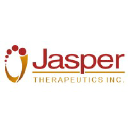Companies
Discover all trending biotech companies
Discover all trending biotech companies

Company Research Platform
Global Employees
64
R&D Investment
20000000
This segment focuses on developing novel conditioning agents to improve the safety and efficacy of hematopoietic stem cell transplantation. The lead product candidate, JSP191, is a conditioning antibody designed to clear hematopoietic stem cells from bone marrow prior to allogeneic stem cell therapy or stem cell gene therapy. Research and development activities include clinical trials evaluating JSP191 in various indications. The technology utilizes antibody-based conditioning to reduce the toxicity associated with traditional chemotherapy-based conditioning regimens. This approach aims to improve patient outcomes by reducing transplant-related mortality and morbidity. The market positioning is centered on providing a safer and more effective alternative to current conditioning methods, addressing a significant unmet medical need in HSCT. Future opportunities include expanding the use of JSP191 in additional HSCT settings and exploring combination therapies. Regulatory and clinical aspects involve ongoing clinical trials and seeking FDA approval for JSP191. Partnerships and collaborations are essential for clinical trial execution and commercialization.
This segment is dedicated to developing engineered hematopoietic stem cell product candidates to overcome limitations of allogeneic and autologous gene-edited stem cell grafts. Research and development activities include engineering stem cells to improve engraftment, reduce graft-versus-host disease (GvHD), and enhance therapeutic efficacy. The technologies employed include gene editing and stem cell manipulation techniques. The therapeutic areas covered include genetic diseases and cancers treatable with gene therapy. The patient impact is focused on providing curative therapies for patients with genetic disorders and improving outcomes in cancer treatment. Market positioning involves addressing the challenges associated with current gene therapy approaches, such as immune rejection and limited durability. Future opportunities include expanding the pipeline of engineered stem cell products and exploring new gene therapy applications. Regulatory and clinical aspects involve navigating the complex regulatory landscape for gene therapy products and conducting clinical trials. Partnerships and collaborations are crucial for accessing gene editing technologies and advancing clinical development.